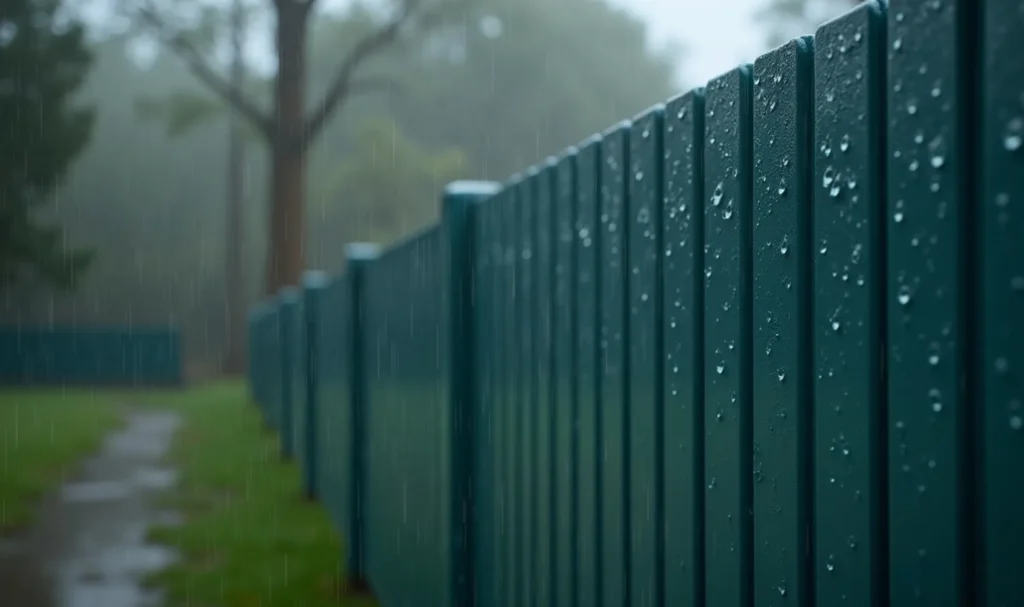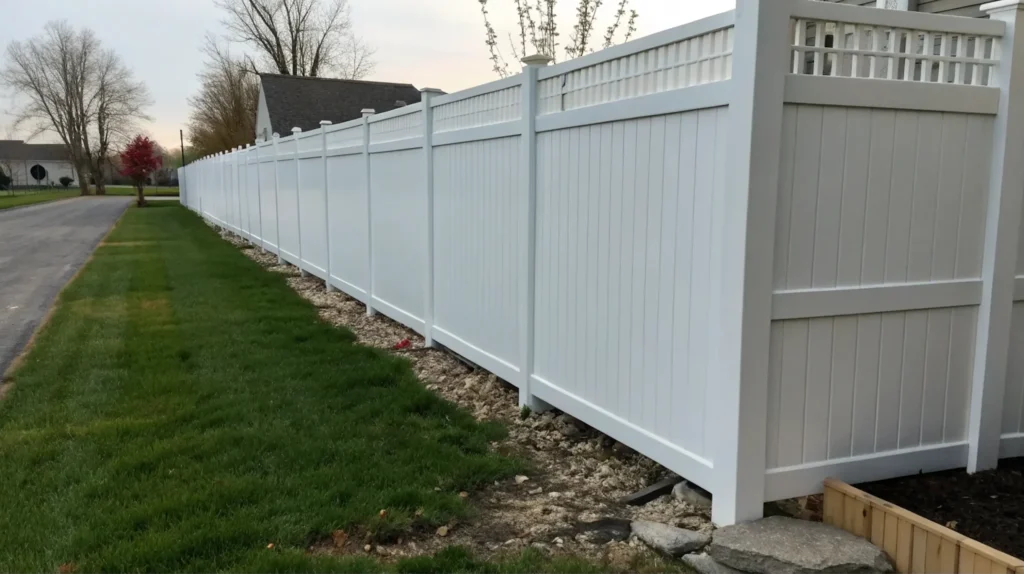When considering ways to enclose your property, you might be wondering about the right material to use. One option that stands out is the vinyl fence. A vinyl fence is not just a means to define your property line; it can transform your outdoor space in various ways. In this comprehensive article, we will delve deep into the numerous benefits of choosing a vinyl fence, covering everything from durability and maintenance to aesthetics and cost.
Vinyl Fence - Understanding the Basics
What is a Vinyl Fence?
A vinyl fence is made from polyvinyl chloride (PVC), a type of plastic that offers exceptional strength and durability. Unlike wood or metal fences, vinyl doesn't rot, rust, or fade in sunlight, making it an attractive option for homeowners seeking a long-lasting fencing solution. Vinyl fences come in various styles and colors, allowing you to match your home’s design while proactively enhancing your outdoor aesthetics.
One of the strongest selling points of vinyl fencing is its ability to withstand harsh weather conditions without deteriorating. Whether it’s the scorching heat of summer or the freezing temperatures of winter, vinyl fences maintain their structural integrity and appearance, giving you confidence in your investment.
Types of Vinyl Fences Available
Vinyl fences come in different styles, each designed for a specific purpose or aesthetic preference. Common styles include privacy fences, picket fences, and rail fences. Privacy fences provide complete seclusion and are typically taller, while picket fences are about defining boundaries while allowing visibility. Rail fences are often used for livestock or decorative purposes, giving that traditional country charm.
Each type suits different needs, tastes, and budgets. When selecting a vinyl fence, consider how it will function in your space and what visual cues you want to convey to neighbors and passersby.
The Durability of Vinyl Fences
Weather Resistance and Longevity
One of the hallmark benefits of a vinyl fence is its outstanding durability. Unlike wood, which can warp or rot, vinyl is resistant to all sorts of weather-related damage. This means you won't have to worry about frequent repairs or replacements due to weather extremes. The longevity of vinyl fencing can often exceed 20 to 30 years when properly maintained, making it a wise choice economically and qualitatively.
Additionally, vinyl won't be impacted by termites or other pests, which tend to love wood materials. This resistance to infestations makes vinyl a hassle-free option for those who want to protect their investment in their property.
Maintenance Requirements for Vinyl Fences
Vinyl fences require minimal maintenance compared to traditional wooden fences. Unlike wood, which needs periodic painting or staining to retain its quality, a vinyl fence typically only requires occasional cleaning with soap and water to remove dirt or debris. No peeling paint or rusty nails means you'll spend less time and money on upkeep.
In regions with heavy buildup of dust or debris, consider using a power washer to ensure the fence looks good all year round. That’s right; you can keep your fence looking fresh without the back-breaking effort that wood usually requires!
Aesthetic Appeal of Vinyl Fences
Color and Style Options
One of the most attractive features of vinyl fencing is the wide array of colors and styles available. You can opt for traditional white or go bold with hues like black, brown, or green to complement your landscaping. This versatility makes it easy to find a vinyl fence that aligns with both your personal taste and the overall aesthetic of your home.
Moreover, vinyl fencing is available in various textures that can mimic the appearance of wood or have a smooth finish. This flexibility allows homeowners to express their individuality while enjoying the benefits of a durable material.
Customization Possibilities
Vinyl fences are easily customizable to meet individual needs. Whether you're looking to achieve a particular height, design, or even unique decorative elements like post caps or latticework, the options are limitless. This level of customization ensures that your vinyl fence won’t just be another barrier; it will be an integral part of your home's design.
Cost of Installing a Vinyl Fence
Comparing Vinyl Fences to Other Materials
When it comes to selecting fencing materials, cost is often a primary concern. Vinyl fences may have a higher upfront installation cost compared to wood, but when you factor in longevity and minimal maintenance, the overall expense tends to balance out over time. Unlike wood, which may require regular repairs and replacements, vinyl often proves to be the more economical choice in the long run.
Budgeting for Installation
It’s crucial to budget effectively for your vinyl fence installation. The costs can vary based on fence height, style, and the amount of land you need to enclose. It’s advisable to obtain multiple quotes from installation professionals to ensure you’re getting a fair price. Additionally, it might help to consider the long-term savings on maintenance and repairs, as these can significantly offset initial installation expenses.
Environmental Impact of Vinyl Fences
Sustainability of Vinyl Materials
Many homeowners are now more environmentally conscious, which raises the question: Are vinyl fences sustainable? While vinyl is a plastic, manufacturers often recycle it, making it a viable option for eco-friendly fencing. The production process generates less waste, and purchasing a recycled vinyl fence can contribute to your sustainable living choices.
Recycling and Disposal Options
The good news is that vinyl can be recycled at the end of its life. Many manufacturers offer recycling programs where old vinyl can be reclaimed and reused to create new products. By choosing vinyl, you can rest assured that your fencing solution has a place in the recycling chain, thus reducing environmental waste.
Installing a Vinyl Fence
DIY vs. Professional Installation
If you’re a handy person, you may be tempted to take on the installation yourself. While this can save you some cash, it’s vital to acknowledge that proper installation is key to maximizing the benefits of a vinyl fence. Improper installation can lead to issues that may negate its long lifespan and durability.
If you’re unsure about going DIY, hiring a professional can ensure that your fence is installed correctly and securely. Professionals have experience that can save you headaches down the line. Plus, warranties on installation can provide you with peace of mind.
Step-by-Step Installation Guide
If you decide to go the DIY route, here's a simple step-by-step guide to installing your vinyl fence:
- Planning: First, identify where you want your fence to go and get the necessary permits if required.
- Materials: Purchase your vinyl fencing materials, ensuring you have all components including posts, panels, and gates.
- Setting Posts: Dig holes for the posts, making sure they’re deep enough for stability, typically 1/3 of the post’s total length.
- Installing Panels: Affix the panels to the posts according to the manufacturer’s instructions, ensuring everything is level.
- Finishing Touches: Install gates and add any optional features like caps or decorations.
- Inspect: Finally, inspect your handiwork to ensure everything is secure, straight, and ready for use.
Vinyl Fence: Common Questions Answered
Can Vinyl Fences Touch the Ground?
One common question homeowners have is whether vinyl fences should touch the ground. The answer can vary based on local building codes, aesthetics, and potential landscaping plans. Many installations allow for a small gap between the bottom of the fence and the ground. This gap can prevent water from pooling against the fence, reduce wear from grass and weeds, and improve airflow. Conversely, some homeowners prefer the seamless look of a fence that touches the ground. Ultimately, consult with local experts or guidelines to determine the best approach for your unique situation.
Are Vinyl Fences Suitable for All Weather?
Vinyl fences are incredibly weather-resistant but are not invulnerable. While they won’t rust or decay, extremely high temperatures can warp them if improperly installed or manufactured. It’s overhead to ensure your fence is made from high-quality materials, which can better withstand temperature fluctuations without difficulty.
Conclusion
Choosing a vinyl fence offers numerous advantages, including durability, low maintenance, and aesthetic versatility. This unique fencing solution is built to last, saving homeowners time and money while enhancing their outdoor spaces. By understanding the various aspects of vinyl fencing, you can make an informed decision that suits your needs and complements your property beautifully.
FAQs About Vinyl Fences
Can I paint my vinyl fence?
Painting a vinyl fence is generally not recommended, as it can lead to peeling and may void any warranties. However, specific products designed for vinyl surfaces can be used if you wish to change its color.
How do I clean my vinyl fence?
Cleaning a vinyl fence is simple; a mixture of soap and water will usually suffice. For stubborn stains, a gentle scrub with a soft-bristle brush works wonders.
What is the lifespan of a vinyl fence?
Most vinyl fences can last anywhere from 20 to 30 years if correctly maintained, making them a solid investment for your property.
Do vinyl fences fade in the sun?
While high-quality vinyl fences resist fading better than many materials, prolonged exposure to sunlight can eventually lead to some loss of color. Choosing UV-protected vinyl can help minimize this effect.
Are vinyl fences dog-friendly?
Yes, vinyl fences are often perfect for keeping dogs secure. They come in various heights and styles, making it easy to create a safe space for pets without worrying about rotting wood or rusting metal.
Can I install a vinyl fence in the winter?
While winter install is possible, it may complicate the process due to frozen ground. Spring or fall offers the best conditions for installation while avoiding potential pitfalls associated with cold temperatures.



